The WWF is run at a local level by the following offices...
- WWF Global
- Adria
- Argentina
- Armenia
- AsiaPacific
- Australia
- Austria
- Azerbaijan
- Belgium
- Bhutan
- Bolivia
- Borneo
- Brazil
- Bulgaria
- Cambodia
- Cameroon
- Canada
- Caucasus
- Central African Republic
- Central America
- Chile
- China
- Colombia
- Croatia
- Democratic Republic of the Congo
- Denmark
- Ecuador
- European Policy Office
- Finland
The story of freshwater degradation and decline is not different in Nepal. With four major rivers systems—Koshi, Gandaki, Karnali and Mahakali—over 11,614 rivers and rivulets, and an immense an immense volume of freshwater stored in the form of glaciers, permafrost and glacial lakes, Nepal holds enormous opportunities for economic growth based on water. Likewise, these river stretches are home to freshwater megafauna such as the Ganges River Dolphin, the critically endangered Gharial and hundreds of fish species that hold significant socio-cultural values.
WHY FRESHWATER
Nepal faces major challenges to its freshwater systems in the way of pollution, watershed and habitat alterations, sand and gravel mining, flow alterations through hydropower development and water diversions, illegal and destructive fishing, invasive species, erosion and sedimentation. Whereas, climate change severely exacerbates challenges faced through one of two extremes: either too much water or not enough of it.
Our goal is to secure water to sustain both people and nature in priority river basins, while striving to change the way water is valued and managed across these critical river basins.
At WWF Nepal, we seek to protect, restore, and manage critical freshwater habitats, safeguard freshwater species, improve watershed health, and promote water stewardship.

FRESHWATER SPECIES AND HABITAT MANAGEMENT
Over the last two decades, WWF Nepal has aided in undertaking wetland inventories, designating eight wetlands as Ramsar sites, and developing and implementing Ramsar site management plans. Likewise, government level partnerships with the Department of National Parks and Wildlife Conservation and Department of Forest and Soil Conservation have proven conducive in the construction, restoration, and management of new and pre-existing wetlands within critical wildlife habitats in our priority landscapes.
As indicators of ecosystem health, freshwater species hold considerable significance for local freshwater habitats. Which is why WWF Nepal has been working to conserve local freshwater species through the preparation and implementation of species action plans, supporting habitat restoration and management through initiatives such as the Gharial Breeding Center, conducting awareness raising campaigns, skill based trainings, and providing alternative livelihood options to river dependent communities.
Likewise, projects such as the USAID funded PAANI Program have aided in the mapping of free flowing rivers of Nepal, and identification of High Conservation Value Rivers which will be instrumental for both decision makers in shaping policy.

INTEGRATED RIVER BASIN MANAGEMENT
WWF Nepal has put in significant efforts in protecting and improving governance of priority river basins in Nepal for over a decade. In 2007, WWF Nepal signed a Memorandum of Understanding with the government's Water and Energy Commission Secretariat in piloting a National Water Plan 2005 embracing a holistic river basin management approach, working closely with local communities to strengthen community-based integrated resource management.
In a first for Nepal, WWF Nepal also supported the preparation of the Chitwan-Annapurna Landscape Strategy and Action Plan under a river basin approach. Between 2018-2020, WWF Nepal supported by USAID's PANI Program conducted a System Scale Planning and Energy Options Assessment for Nepal, to explore means of balancing and the protection of its High Conservation Value Rivers with the development of low-carbon, low impact and low-cost power systems.
WWF Nepal has also initiated Payment for Ecosystem Services and climate resilient watershed management plans for critical watersheds to reduce disaster risks and sedimentation in wetlands with a focus on building water security in the face of climate change.
 While hydropower may seem like the solution to Nepal’s energy woes, water infrastructure can have negative effects on the very water bodies that they depend on. Despite relatively minimal hydropower development in Nepal, it poses one the greatest threats to freshwater biodiversity in the country, water infrastructure such as dams essentially interrupt or block migration pathways and home range movements of freshwater species fragmenting them into populations too small to be viable.
While hydropower may seem like the solution to Nepal’s energy woes, water infrastructure can have negative effects on the very water bodies that they depend on. Despite relatively minimal hydropower development in Nepal, it poses one the greatest threats to freshwater biodiversity in the country, water infrastructure such as dams essentially interrupt or block migration pathways and home range movements of freshwater species fragmenting them into populations too small to be viable.
Likewise, water infrastructure can ultimately alter the hydrological regimes of rivers, creating dewatered zones and impacting the livelihoods of agrarian communities, tourism enterprises and others downstream. While Nepal's hydropower development policy mandates that at least 10% of dry season river flow must be maintained at all times, the ecological benefits of flowing rivers is often ignored in favor of electricity supply leading to dewatered river stretches downstream.
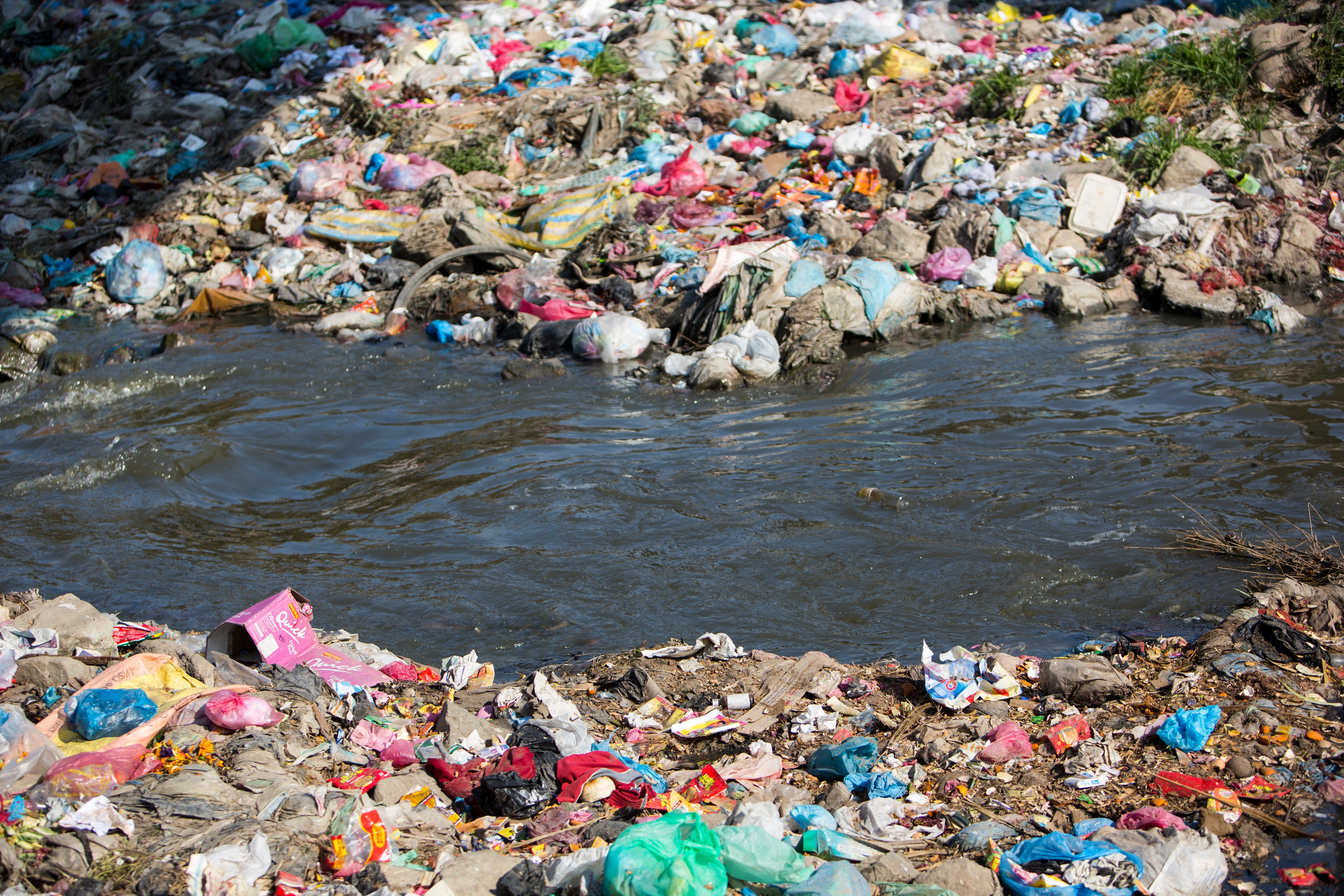 From excessive use of inorganic fertilizers and pesticides to domestic sewage and industrial effluents, an ever-growing list of pollutants are reducing the quality of wetlands across the country. Water pollution can affect both the quantity and quality of water available in freshwater habitats, while significantly impacting human health and freshwater biodiversity or aquatic ecosystems.
From excessive use of inorganic fertilizers and pesticides to domestic sewage and industrial effluents, an ever-growing list of pollutants are reducing the quality of wetlands across the country. Water pollution can affect both the quantity and quality of water available in freshwater habitats, while significantly impacting human health and freshwater biodiversity or aquatic ecosystems.
Untreated industrial effluents, domestic sewage, untreated storm water, agricultural runoff, and solid waste are the primary causes of pollution in the rivers and wetlands. These pollutants have irreversible effects on all wetland inhabitants—from crocodiles to fish to bottom dwellers such as macro-invertebrates. There has been a 50% decline in fish diversity in Ghodaghodi lake alone over the last 20 years (27 fish species were recorded in 1998, but only 13 species were found in 2017).
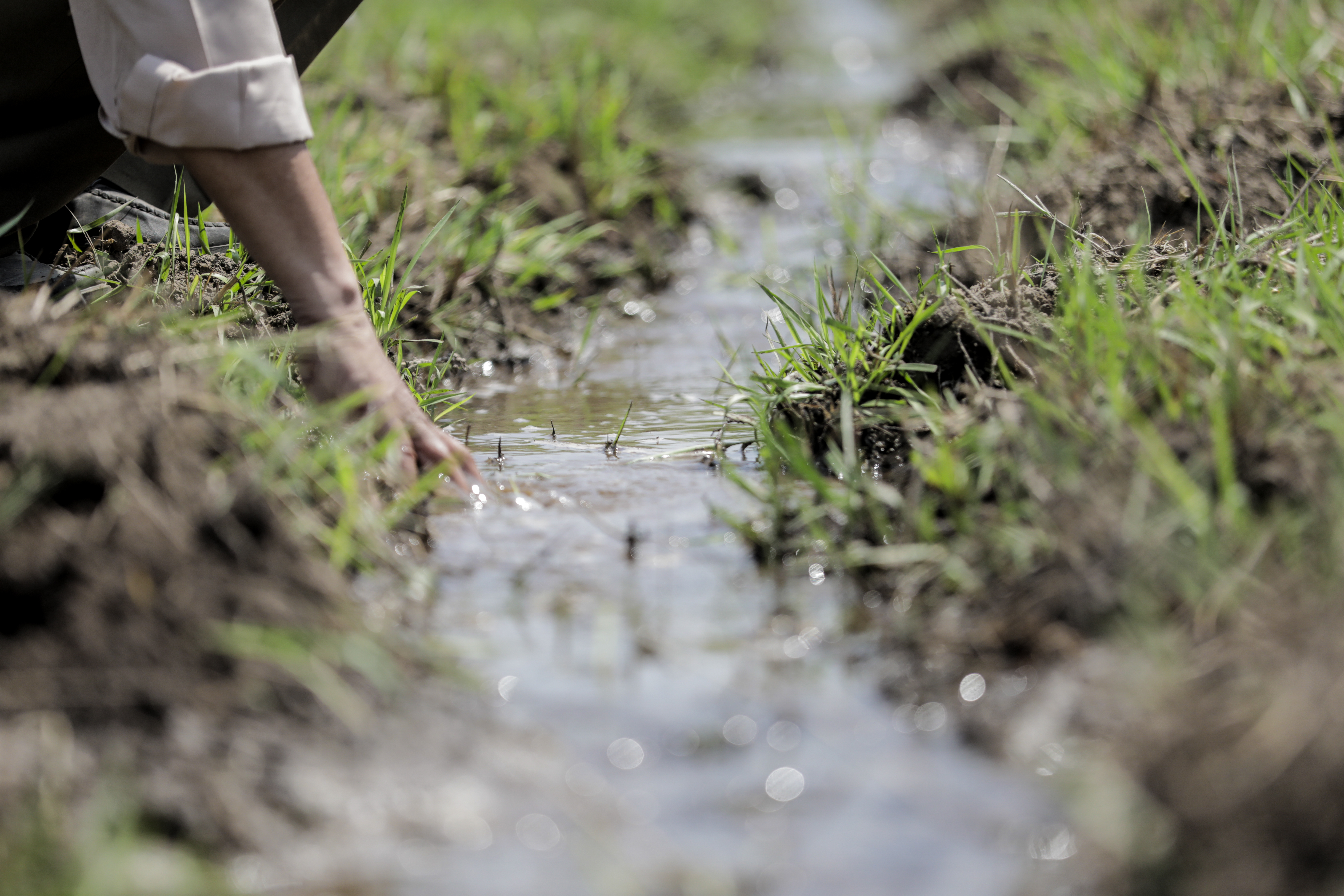 Overtime, population growth, expanding human settlements, agricultural lands, and unplanned development/industrialization have zeroed in on wetlands, cutting into their boundaries at alarming rates—ultimately resulting in freshwater and wetland shrinkage. These are also some of the underlying causes behind increasing riverbed sand and gravel mining in Nepal, with alarming results such as destruction of fish spawning sites and nursery grounds and habitat destruction of freshwater species such as the critically endangered gharial and the river dolphin among others, in addition to seriously affecting the flow of ecosystem services from rivers.
Overtime, population growth, expanding human settlements, agricultural lands, and unplanned development/industrialization have zeroed in on wetlands, cutting into their boundaries at alarming rates—ultimately resulting in freshwater and wetland shrinkage. These are also some of the underlying causes behind increasing riverbed sand and gravel mining in Nepal, with alarming results such as destruction of fish spawning sites and nursery grounds and habitat destruction of freshwater species such as the critically endangered gharial and the river dolphin among others, in addition to seriously affecting the flow of ecosystem services from rivers.
Estimates indicate that wetlands across the country have shrunk by 5.41% over the past 25 years. The impacts are especially evident through a bird’s eye-perspective; habitat shrinkage has jeopardized Nepal’s status as a harbor for more than 50,000 migratory birds.
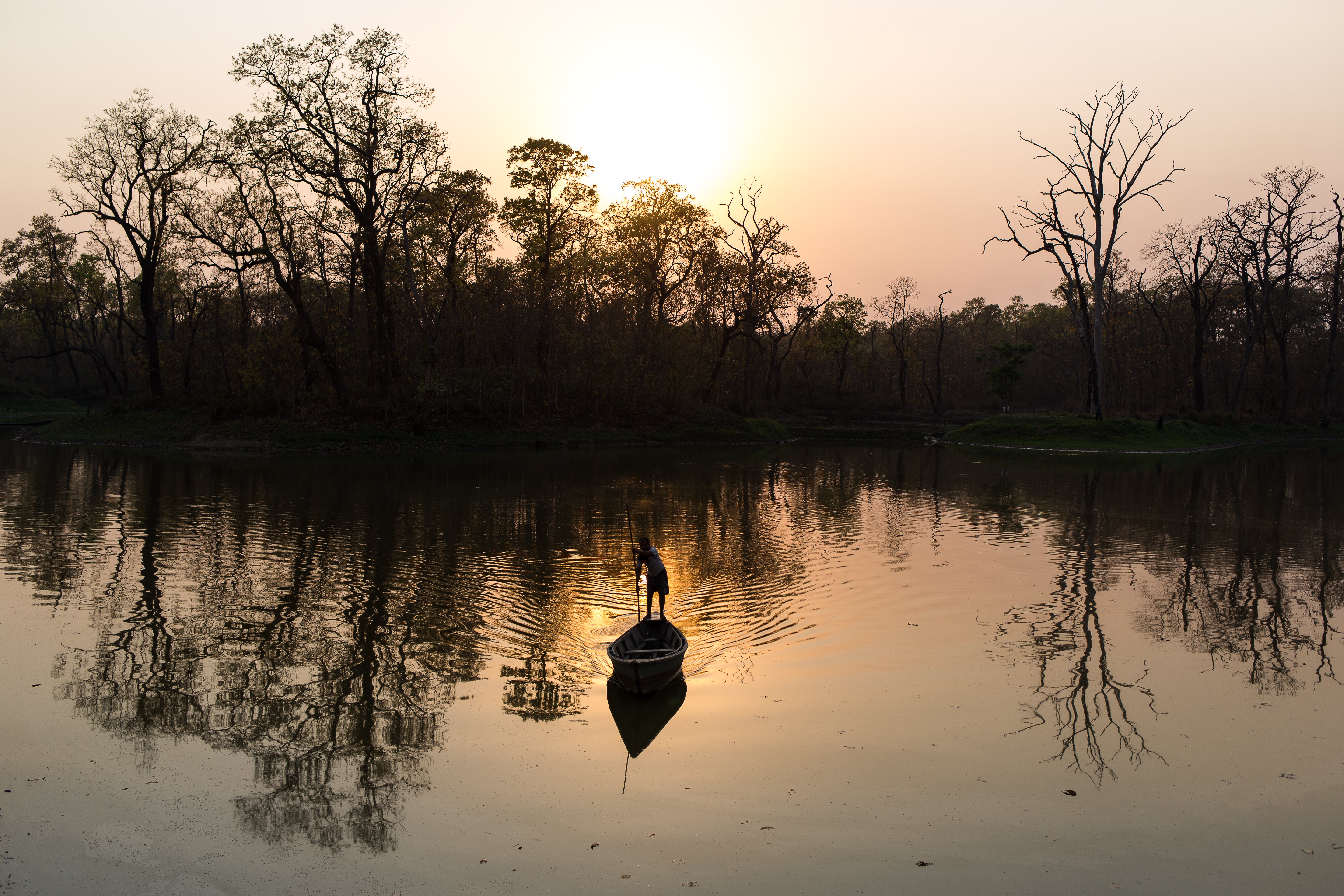 Another big threat in freshwater habitats is the increase in illegal and destructive fishing practices. With the commercial value of fish in nearby markets, and inadequate regulations and enforcement freshwater habitats are often exploited by illegal or commercial fishermen. Consequently, practices like illegal or over fishing not only depresses local fish populations and species, but can also result in accidental entrapment of other freshwater mega species like the river dolphin and gharial. Likewise, government regulations and enforcement on fishing are limited, which are often exploited by illegal and commercial fishermen.
Another big threat in freshwater habitats is the increase in illegal and destructive fishing practices. With the commercial value of fish in nearby markets, and inadequate regulations and enforcement freshwater habitats are often exploited by illegal or commercial fishermen. Consequently, practices like illegal or over fishing not only depresses local fish populations and species, but can also result in accidental entrapment of other freshwater mega species like the river dolphin and gharial. Likewise, government regulations and enforcement on fishing are limited, which are often exploited by illegal and commercial fishermen.
 Excessive nutrients in wetlands can often lead to widespread growth of invasive aquatic plants and species. Invasive species can have wide ranging impacts on freshwater systems, considerably degrading water quality by blocking the air water interface. Left uncontrolled their quick proliferation stifles underwater ecosystems—blocking sunlight, reducing oxygen levels, breeding bacteria and other microorganisms—resulting in elimination of wetland flora and fauna.
Excessive nutrients in wetlands can often lead to widespread growth of invasive aquatic plants and species. Invasive species can have wide ranging impacts on freshwater systems, considerably degrading water quality by blocking the air water interface. Left uncontrolled their quick proliferation stifles underwater ecosystems—blocking sunlight, reducing oxygen levels, breeding bacteria and other microorganisms—resulting in elimination of wetland flora and fauna.
The thick and extensive mats block both sunlight and air from reaching the water surface, providing breeding grounds for disease vectors with known cases of contact dermatitis among people and cattle kills. Meanwhile, invasive freshwater species such as the tilapia fish—introduced for economic and nutrition benefits—have a broader environmental tolerance and high reproductive rate which can harm native fish species via competition over available food and space.
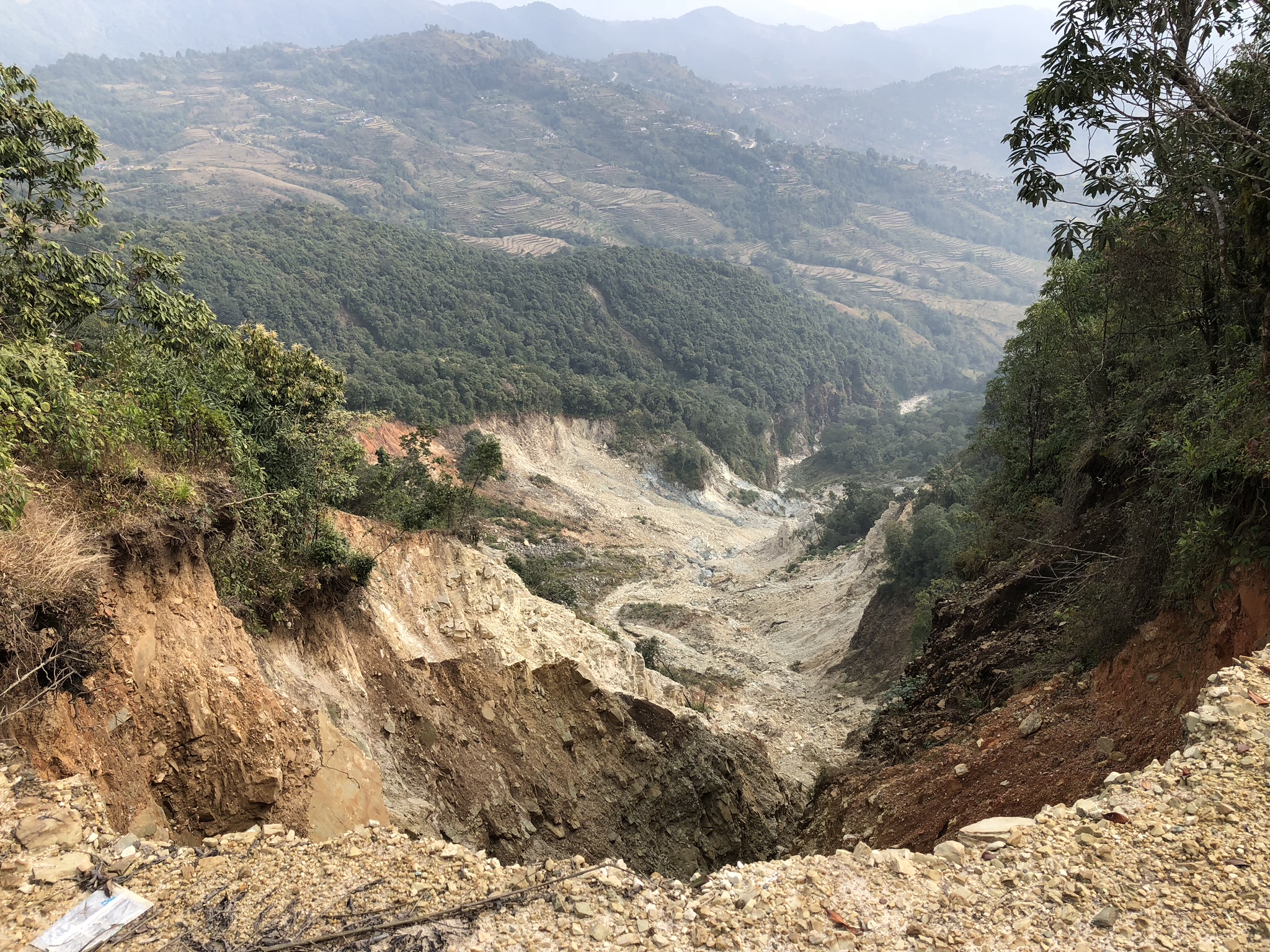 Soil erosion and subsequently landslides are one of the primary reason for sediment build up in rivers, lakes, and wetlands. Land use and land cover change, unsustainable agricultural practices upstream often lead to soil erosion, whereas haphazard road construction or infrastructure development can trigger landslides which results in increased sediment aggradation or sediment deposits in wetlands.
Soil erosion and subsequently landslides are one of the primary reason for sediment build up in rivers, lakes, and wetlands. Land use and land cover change, unsustainable agricultural practices upstream often lead to soil erosion, whereas haphazard road construction or infrastructure development can trigger landslides which results in increased sediment aggradation or sediment deposits in wetlands.
Sediment aggradation in river and lake beds reduces the volume of water that wetlands can hold, increasing chances of flooding and water turbidity affecting both freshwater species and human health.
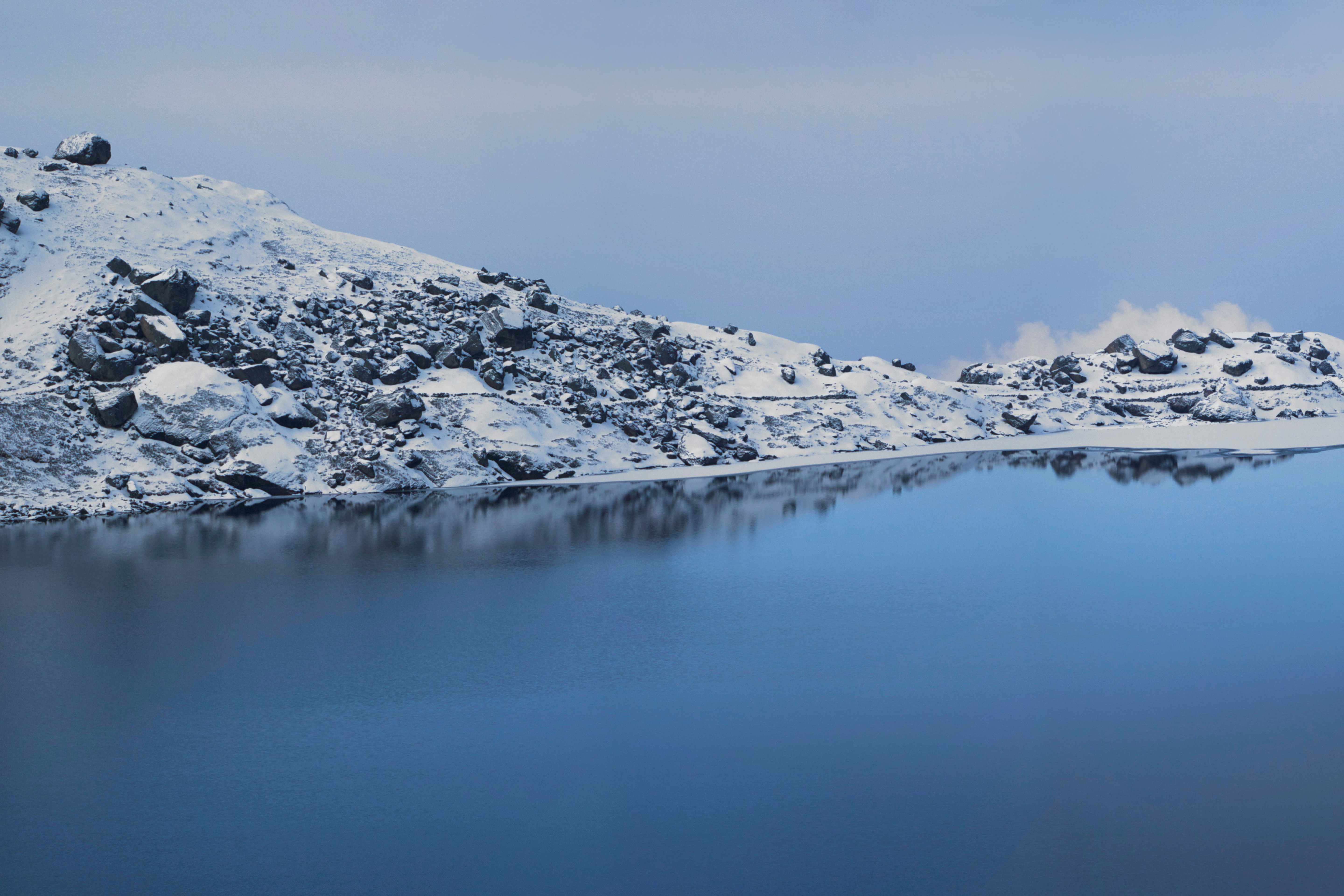 Climate change affects freshwater species through changes in precipitation patterns and hydrological regimes which become less predictable and characterized by frequent extreme events such as droughts and floods. Meanwhile, loss of glaciers and reduced snowpack in mountains further reduces flow in Nepal's snow-fed rivers during the dry seasons. Such flow modifications have negative impacts on ecological diversity and function of river systems. Moreover, climate warming also has direct influence on the survival and distributions of some freshwater species, as increases in water temperatures cause shift in fish distributions.
Climate change affects freshwater species through changes in precipitation patterns and hydrological regimes which become less predictable and characterized by frequent extreme events such as droughts and floods. Meanwhile, loss of glaciers and reduced snowpack in mountains further reduces flow in Nepal's snow-fed rivers during the dry seasons. Such flow modifications have negative impacts on ecological diversity and function of river systems. Moreover, climate warming also has direct influence on the survival and distributions of some freshwater species, as increases in water temperatures cause shift in fish distributions.
Gharial
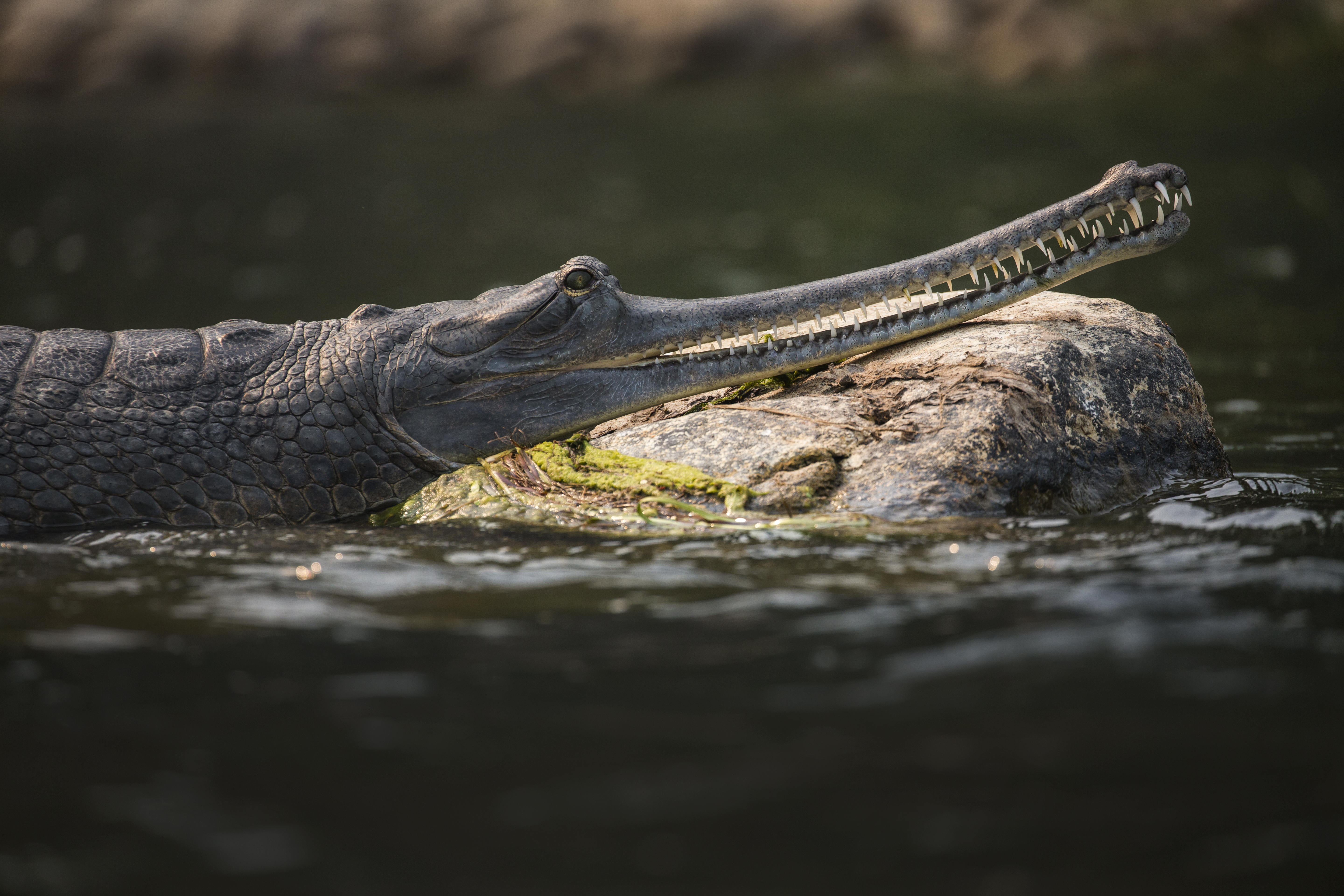
Scientific name: Gavialis gangeticus
Population: Approximately 200
Status: Listed in Schedule I of National Park and Wildlife Conservation Act, 1973 as protected reptile and as Critically Endangered on IUCN Red List
Habitat: Gharials are habitat and diet specialists preferring a confluence of fast flowing rivers near high sand banks for basking, nesting and laying eggs.
Distribution: Historically, gharials were widely distributed across the major river systems of the Indus River in Pakistan, Gangetic flood plains of India, Nepal, Bangladesh, Bhutan, and Irrawaddy in Myanmar. Currently, they are only found in Nepal and India. In Nepal, gharial populations are confined to Rapti and Narayani in Chitwan National Park, Babai and Karnali in Bardia National Park and seasonally reported in Mohana in Kailali, as well as Reu , Khageri and Budhi Rapti in Chitwan.
Challenges: Despite endeavors to augment wild populations of gharials in Nepal, their specialized feeding behavior, limited distribution and low survival rate in the wild, poses huge challenges for long-term survival of the species. Other major threats to their survival include habitat degradation, dams and barrages, illegal and destructive fishing, sand and gravel mining, pollution, and climate change
WWF Initiatives: WWF Nepal supported the preparation of the Gharial Conservation Action Plan (2018-2022) and drafting of the Gharial & Aquatic Species Conservation Plan for Narayani and Rapti, alongside regular support for the Gharial Conservation and Breeding Center (GCBC), gharial counting and release in rivers, capacity building and awareness programs, and mobilization of river rangers for river monitoring.
River Dolphin
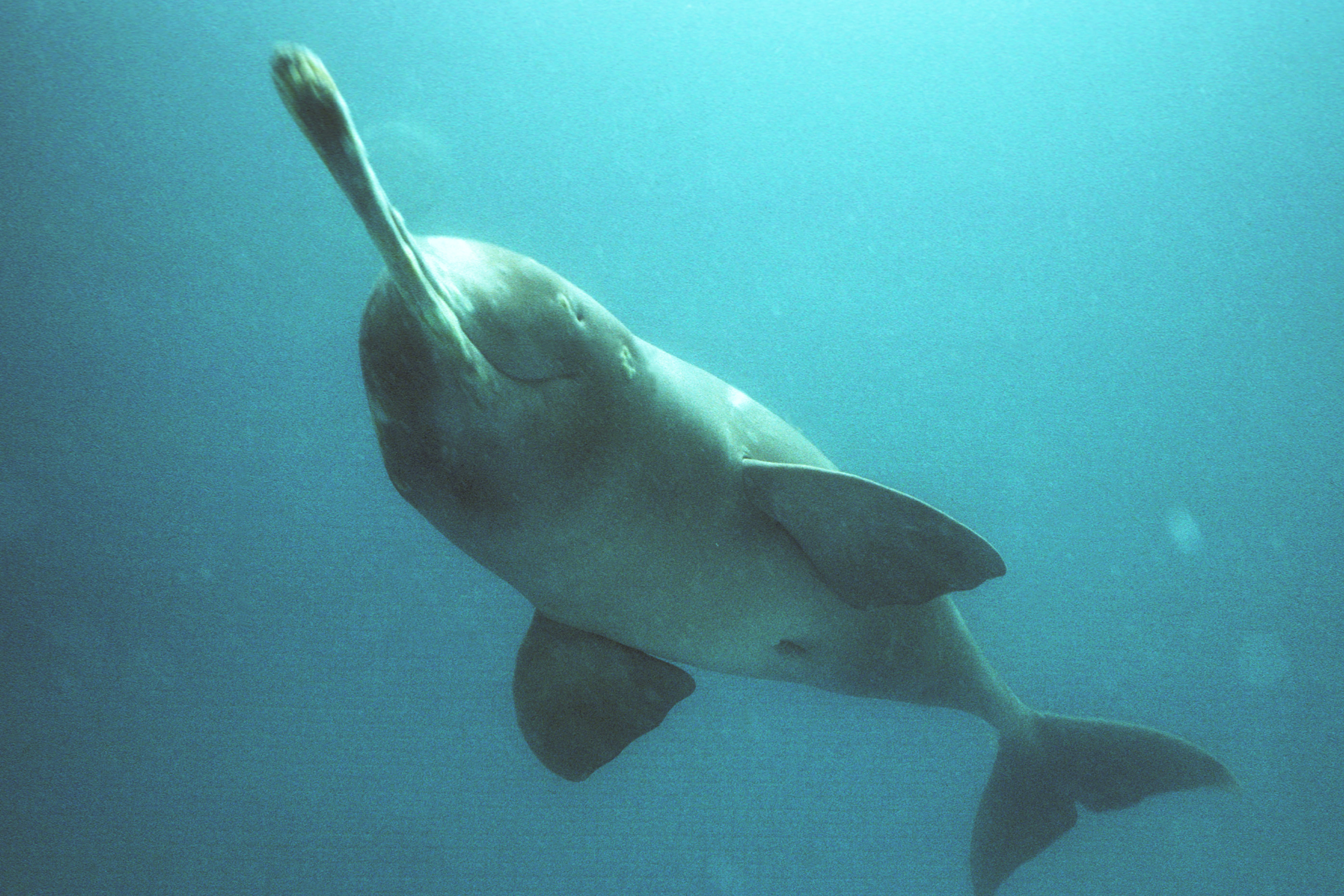
Scientific name: Platanista gangetica gangetica
Length: Up to 2.5m (Male); Up to 2.7m (Female)
Weight: 150–200 Kg
Population: < 100
Status: Listed in Schedule I of National Park and Wildlife Conservation Act, 1973 as protected mammal and as Endangered on IUCN Red List
Habitat: River dolphins prefer deep waters in and around a confluence of rivers.
Distribution: Historically, river dolphins were widely distributed across all four major river systems of Nepal namely—Koshi, Gandaki, Karnali and Mahalaki. Currently, they are confined to the main channels of Koshi, Gandaki, Karnali, and regularly observed in Mohana and its tributaries during the monsoons.
Challenges: Development of water-related infrastructure such as dams, barrages and large irrigation projects can change flow regulation of river systems. Meanwhile, illegal and destructive fishing, bycatch, sand and gravel mining, river pollution, operation of motorboats, and unusual droughts exacerbated by climate change that lowers water levels, are other major challenges faced by the species. Likewise, lack of a coordinated conservation plan, inadequate research and limited awareness on dolphin conservation are other challenges.
WWF Initiatives: WWF Nepal continues to support river dolphin monitoring and awareness programs among river communities through construction of watch towers, informational hoarding boards, and skill-based trainings for river dependent communities, alongside engaging key government and non-government stakeholders at local levels in workshops and programs centered on dolphin conservation.
Smooth Coated Otter
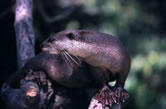
Scientific name: Lutrogale perspicillata
Population: No country wide population estimate available
Status: Listed as Vulnerable on IUCN Red List
Habitat: The smooth coated otter prefers habitats with plentiful freshwater, shallow and placid waters/wetlands and seasonal swamps, as well as rivers and lakes. It is one of three otter species found in Nepal, in addition to the Eurasian otter and Asian small-clawed otter
Distribution: In Nepal, smooth coated otters have been recorded from Karnali to Babai in Bardia National Park, and in Rani Tal and Kalikich Lake in Shuklaphanta National Park. Their full distribution within the country is unclear given the lack of surveys on Nepal's rivers and wetlands.
Challenges: Like other freshwater species, the smooth coated otter is threatened by illegal and destructive fishing, poaching, sand and gravel mining, river pollution and flow regulation due to water-related infrastructure such as dams, barrages, and large irrigation projects. Inadequate research adn limited awareness on the need for otter conservation are additional challenges in protecting otter populations in Nepal.
WWF Initiatives: WWF Nepal recently prepared an otter distribution map of Nepal in consultation with different otter experts and researchers. The smooth coated otter has been identified as a focal species in WWF Nepal's current strategic plan. WWF Nepal is currently working on developing a community based smooth coated otter monitoring protocols, and towards otter conservation awareness programs.
Other Freshwater Species
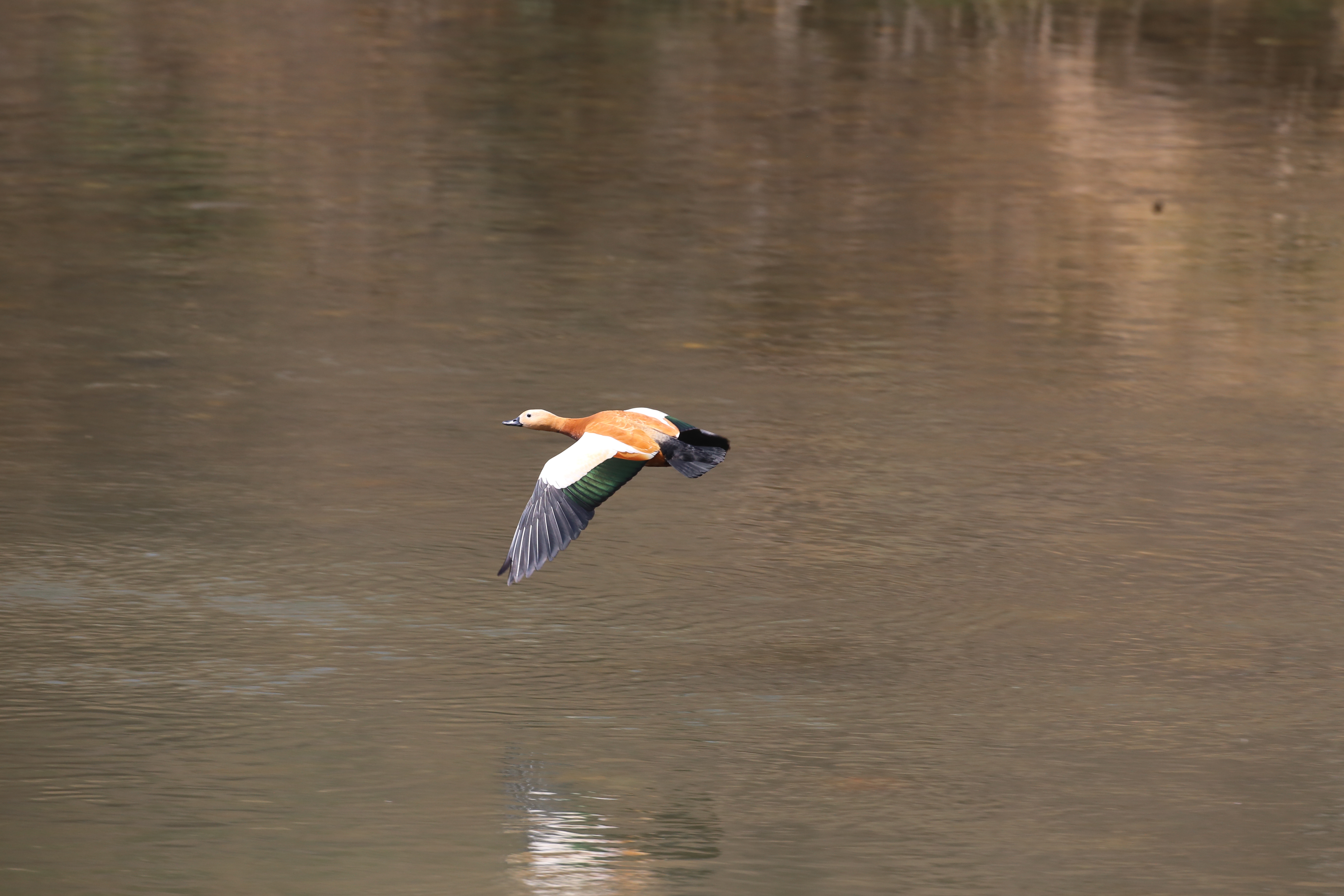
Recently, WWF Nepal reviewed the fish species availability in Nepal in consultation with fish experts from Nepal. As part of this, rivers and river stretches with high fish endemism, species richness and migratory species richness were identified in Nepal.
WWF Nepal has also planned to protect focal wetland migratory birds of nepal such as Bar Headed Goose, Ruddy Shelduck, Demoiselle Crane and Sarus Crane.

As Nepal charts its development trajectory, instilling sustainability in national water plans and strategies will be crucial for the survival of our wetlands—be it the establishment of freshwater sanctuaries, treating wastewater before discharging into wetlands, controlling sand and gravel mining, or maintaining unhindered north-south biological connectivity in at least three major rivers across the country.
However, protecting freshwater species or habitats cannot happen in isolation. An enabling environment is vital. WWF Nepal has been working in partnership with a multitude of stakeholders, from national and local governments to academia, civil society organizations and communities to protect, restore, and manage healthy freshwater systems. Only by working together can we look after this most vital shared resource.







